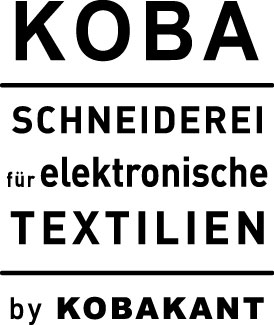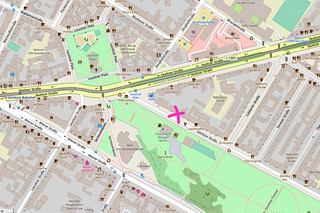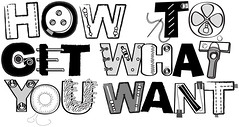WORTH’s Questions and Our Answers
MAURIN DONNEAUD + KOBAKANT PARTNERSHIP INTERVIEW
Partner 1: Maurin Donneaud
Partner 2: KOBAKANT (Mika Satomi, Hannah Perner-Wilson)
Why did you apply to WORTH/ what do you hope to gain?
P1 Answer: The idea does not come directly from me but from my collaborators who wished to apply to take advantage of this support in order to develop a project that I initiated in collaboration with Alice Heit in 2012. I naturally accepted the collaboration because I am in awe at their work and the project was in the first iteration process.
P2 Answer: We applied to WORTH to fund the development of a fiber optic connection solution that we want to see made available to the e-textile community that we are a part of. We hope that this solution will allow us and others to explore this new combination of technologies to create meaningful work.
Among the support WORTH is going to offer you which one do you think will be the most useful for you and why?
P1 Answer: This approach is new for me because I use to develop my personal projects with my own resources. It is therefore difficult to answer this question at the beginning of the project because I still need to go through each step of this support. Nevertheless, I am happy to benefit of this financing that will help to pay the services engaged in this type of development project.
P2 Answer: Without the money we would not be able to spend time working on this project as freely, nor be able to iterate the design by having batches of the circuitboard produced. We hope that WORTH will also be able to help us with questions of commercialisation of a free and open source design, finding distributors and solving legal issues.
with the money support, we can pay our working time and therefor we do not have to worry about “getting it back” from royalty or patient, thus allows us to open source the project. I hope more public funding is used for this way to supporta free and open source projects.
Why did you choose to form this partnership?
P1 & P2 Answer: We know each other for 5+ years and share many same ideas and ideals, so working together felt like a natural fit. Especially we are both very interested in creating this specific design solution.
What led you to your project idea?
P1 Answer: The idea of combining textile and electronics and the wish of finding clever solutions to marry these two domains. Also the idea of allowing people to have access to this kind of technology.
P2 Answer: Both of us have been working on projects that require this solution and have been making custom handmade versions of it. Now it is time to turn these versions into an industrially manufacturable thing.
we are hoping that the manufacturable design will let the LuLu board distributed to wider audience, from textile design to educational field.
What type of products do you see your LED lighting connection design used for?
P1 Answer: I like the idea of textile Art like the work of Sheila Hicks who did many researches and experiments and also some more common textiles that have been sold as textile product for furnishing. This is an inspiration that I really want to follow with Alice Heit.
P2 Answer: We are not particularly focussed on enabling products with our design, rather we are more broadly interested in facilitating the realization of unique ideas made by individual crafters and DIY makers as well as learning experiences by students and novices.
In the grand scheme of the industry how will your design affect it?
P1 Answer: Free hardware and free software is a disruptive element in an industry that believes in intellectual property. The European support of this project is a big acknowledgment for people who work for “creative commons” people who want a wealth distribution more equitable, a more accessible knowledge.
P2 Answer: We would like to inspire others to follow a similar route of free and openly shared designs around which communities can form. When information is made free and available “users” have full access and can contribute back to the project.
In your opinion why does connectivity between electronics and textile need to improve?
P1 Answer: The question of connectivity is the center of our practice and the relevant solutions are alwase related to many parameters of the project.
In our project the solution we work on is lead by the idea of creating a technologie that is accesible to crafters who work with hand tools.
P2 Answer: Our project is not trying to solve connectivity between electronics and textile, but between textiles, electronics and fiber optics. This connection is currently not solved for our target audience and as with making any technology accessible to people, we expect the community to create the value by engaging with the technology. Using it to build things they need and want to see in the world, by using it to express themselves and have fun.
What do you think the future trends are in textile technologies?
P1 Answer: The trend for the future is the integration of digital technologies within fiber and textile manufacturing processes. Today solutions for integrating electronics into textiles will tomorrow be fully immaterialized in fiber and flexible materials. We can say that the integration of electronics into textile is the stone Age of eTextile but the material evolution must not close the acces to it technologie, it recipe. Through documenting and technical choices we promote technologies that can still be open by people who want to.
P2 Answer: Smaller, softer, more integrated in the textile… but also potentially more harmful to the environment because the technology gets pushed to the market as fast as possible without consideration for the consequences.
It will be great if the trend becomes rather local and small scale production with environmentally and socially sustainable practices. But for this, both the participants of the field (textile technologies), policy makers and consumers have to re-think how we develop, produce and consume textile technologies.
Which exciting new products have you seen this year in design/tech/homeware?
P1 Answer: Fairphone
P2 Answer: None.
What is your personal definition of innovation?
P1 Answer: Innovation is a suitcase word. I like invention much more and this concept is the meaning of combination.
P2 Answer: A buzzword used to draw attention to something so that people will think it is important enough to invest in. Investment will then push research and development in this area meaning that the money goes where the money already is, creating unfair power structures.





